金属 3D 打印:权威指南 (2021)
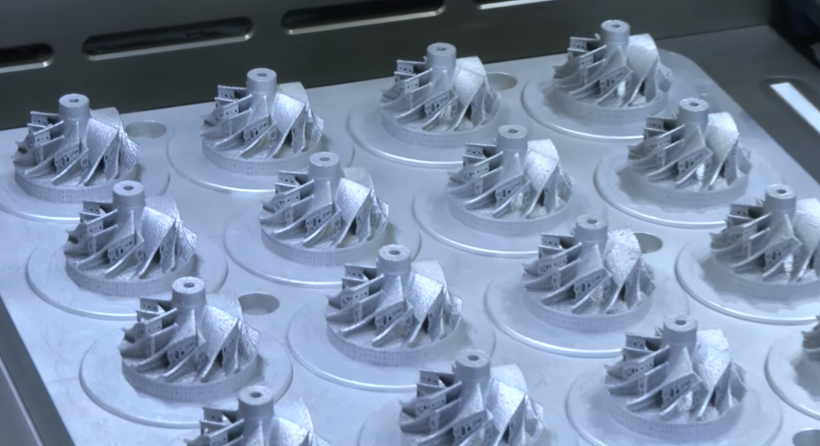
金属 3D 打印在各个方面都在快速发展 :技术越来越先进,打印速度越来越快,工业材料的范围比以往任何时候都多。这些进步为该技术开辟了令人兴奋的新应用。
然而,掌握可用技术并将它们集成到现有工作流程中对许多公司来说可能是一个挑战。
本指南旨在帮助您更好地了解金属 3D 打印,从目前可用的技术到该技术的优势、局限性和关键应用。
金属 3D 打印:技术
目前市场上有许多不同的金属 3D 打印技术。虽然每个都有其优点和局限性,但所有这些都通过逐层创建金属零件的基本 3D 打印原理统一起来。
常用的金属3D打印技术包括:
- 粉床融合
- 直接能量沉积
- 金属粘合剂喷射
- 超声波片材层压
粉床融合技术
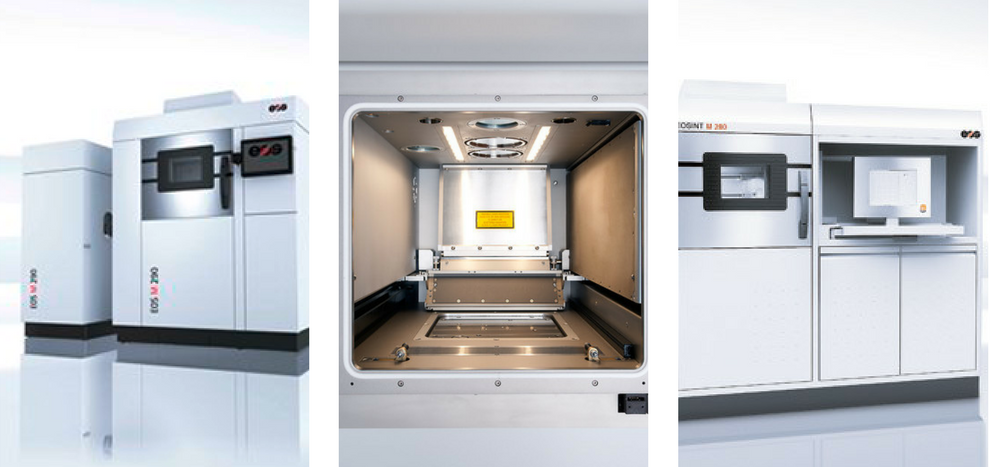
在所有金属 3D 打印技术中,金属粉末床融合技术可能是最成熟的。
使用粉末床融合技术,粉末金属层均匀分布在机器的构建平台上,并通过能量源(激光或电子束)选择性地融合在一起。
有两种关键的金属 3D 打印工艺属于粉末床融合类别:
- 选择性激光熔化 (SLM) / 直接金属激光烧结 (DMLS)
- 电子束熔化 (EBM)
选择性激光熔化和直接金属激光烧结
根据 IDTechEx Research 的一份报告,SLM 和 DMLS 是最主要的金属 3D 打印技术,其中 DMLS 拥有全球最大的安装基础。
使用 SLM 和 DMLS,可以将强大的微调激光选择性地应用于金属粉末层。通过这种方式,金属颗粒融合在一起形成一个零件。
这两种技术的一个重要要求是一个充满惰性气体(例如氩气)的封闭式构建室。这可以防止金属粉末受到氧气污染,并有助于在打印过程中保持正确的温度。
电子束熔化
粉末床融合系列中的另一个 3D 打印工艺是电子束熔化 (EBM)。 EBM 的操作与 SLM 类似,因为金属粉末也被熔化以形成完全致密的金属部件。
为了防止粉末受到污染和氧化,EBM 工艺在真空环境中进行。
SLM/DMLS 与 EBM 技术之间的主要区别在于能源:EBM 系统使用高功率电子束作为热源来熔化金属粉末层,而不是激光。
与 SLM 和 DMLS 相比,EBM 还倾向于生产精度较低的金属零件。这是因为 SLM 工艺中的层厚度通常比 EBM 中的层厚度更薄(20 到 100 微米之间)(50 到 200 微米之间),从而实现更准确的打印。
由于电子束通常比激光更强大,因此 EBM 经常与高温金属超合金一起使用,为喷气发动机和燃气轮机等高要求应用制造零件。生产的金属部件密度高,因此非常适合航空航天工业。
EBM 系统的高成本是希望投资该技术的公司考虑的问题。此外,由于该技术依赖于电荷,因此 EBM 只能用于导电金属,例如钛和铬钴合金。
无论是 SLM/DMLS 还是 EBM,所有使用粉末床融合技术生产的金属零件都需要某种形式的后处理。后处理是必要的,不仅是为了提高零件的美观度,而且是为了提高其机械性能并满足精确的设计参数,尤其是对于要求苛刻的应用。
直接能量沉积
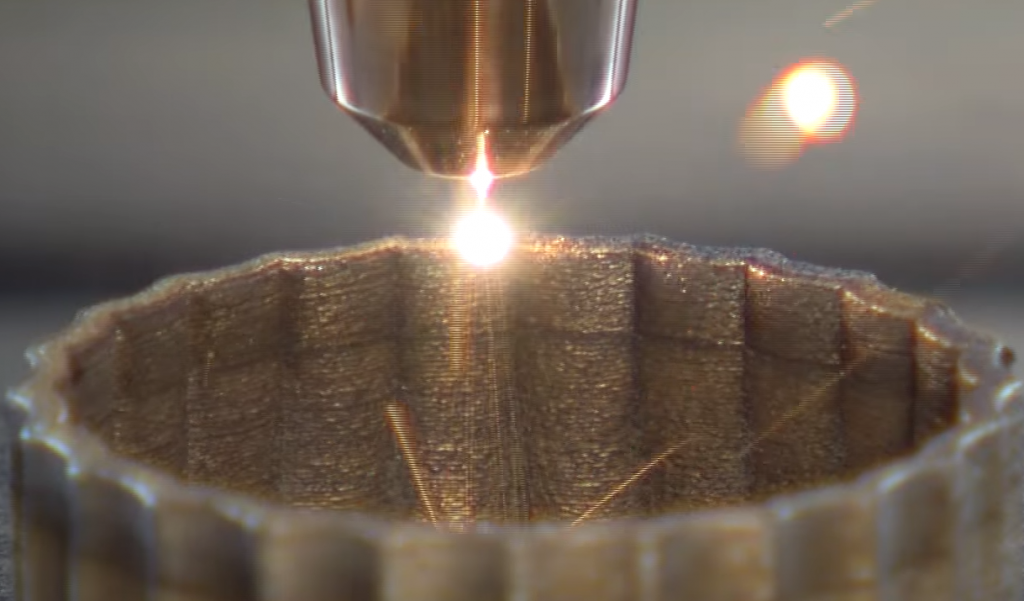
[图片由混合制造技术提供 ]
直接能量沉积 (DED) 的工作原理是用激光或电子束熔化金属材料,因为金属材料通过喷嘴沉积到构建平台上。通常,DED 机器具有较高的材料沉积率,可以处理粉末或线状金属材料,制造具有近净形状的高密度零件。
与通常生产更小但高度精确的部件的粉末床融合工艺相比,一些专有的 DED 方法可以生产更大的金属部件。
一个例子是美国公司西亚基的专有电子束增材制造 (EBAM) 技术,据说该技术能够生产长度超过 6 米的零件。
DED技术非常适合修复涡轮叶片和注塑模具嵌件等损坏的零件,这些零件使用传统制造方法很难或不可能修复。
金属粘合剂喷射
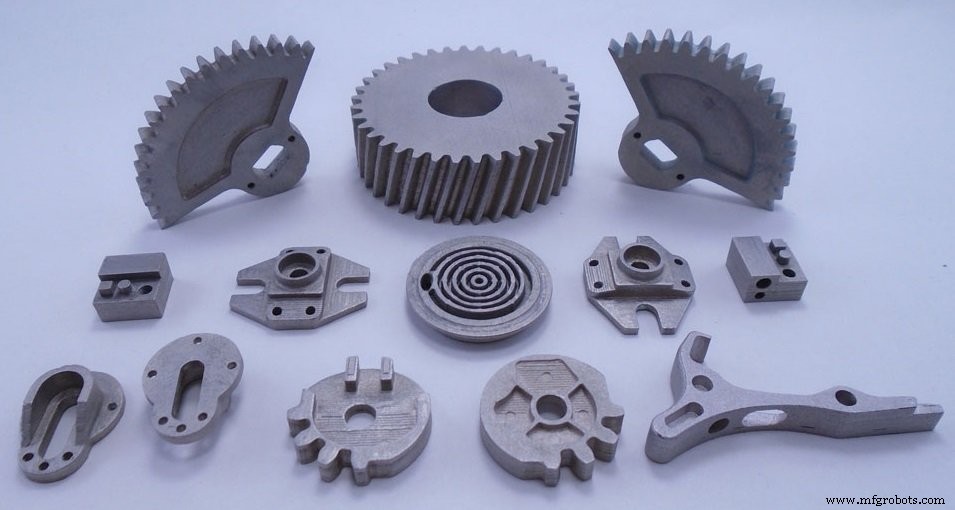
金属粘合剂喷射是市场上最具成本效益的金属 3D 打印技术之一。
类似于在纸上打印墨水,金属粘合剂喷射涉及使用打印头。该打印头在构建平台上移动,将粘合剂液滴沉积到金属粉末层上。通过这个过程,金属颗粒融合在一起形成一个零件。
可以使用多个打印头来加快打印过程。
金属粘合剂喷射机提供更快的打印速度和大的打印量。它们也往往比粉末床系统便宜得多。
然而,由于打印过程的性质,使用金属粘合剂喷射生产的部件具有有限的机械性能:由于粘合剂在打印过程中被烧毁,它们具有高度多孔性。
因此,零件在最终使用之前需要进行大量的后处理。这些步骤包括固化、硬化零件、烧结和渗青铜以减少孔隙率并增加强度。
超声波片材复合
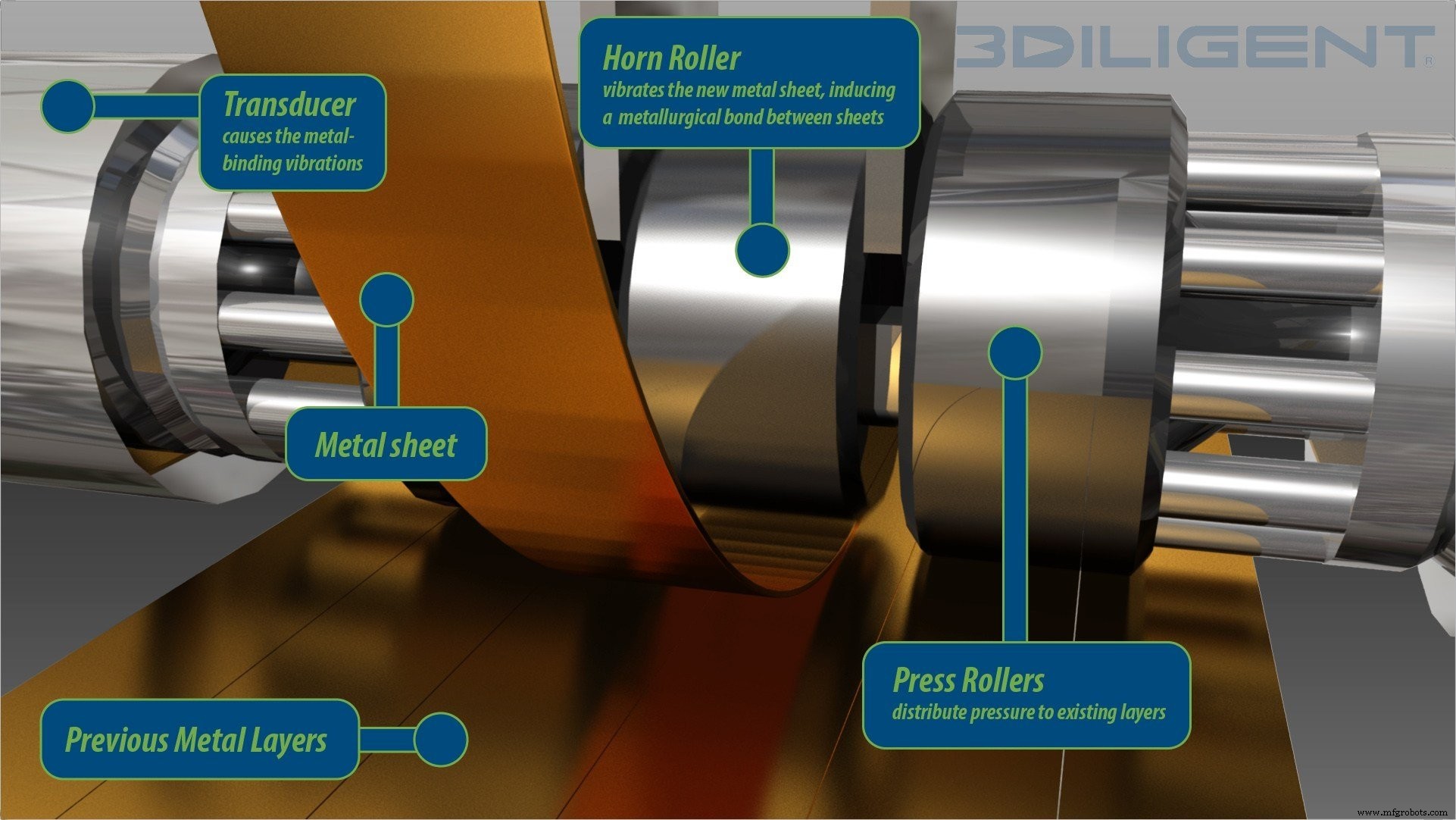
超声波薄板层压是一种低温混合金属增材制造工艺。
该技术的工作原理是在压力下通过超声波振动将薄金属箔焊接在一起。打印过程完成后,应用数控铣削去除多余的材料并完成零件。
由于是低温工艺,因此超声波层压板不会熔化金属材料。该工艺还能够将不同类型的金属熔合在一起。
这种技术的主要优点是成本低、打印速度快,以及能够用各种金属制造带有嵌入式电子设备和传感器的零件。
新型金属 3D 打印工艺
随着金属 3D 打印的快速发展,硬件制造商不断寻求开发新工艺。下面,我们概述了一些新开发的金属 3D 打印技术,它们有可能在速度和成本方面彻底改变金属 3D 打印。
基于挤压的金属 3D 打印
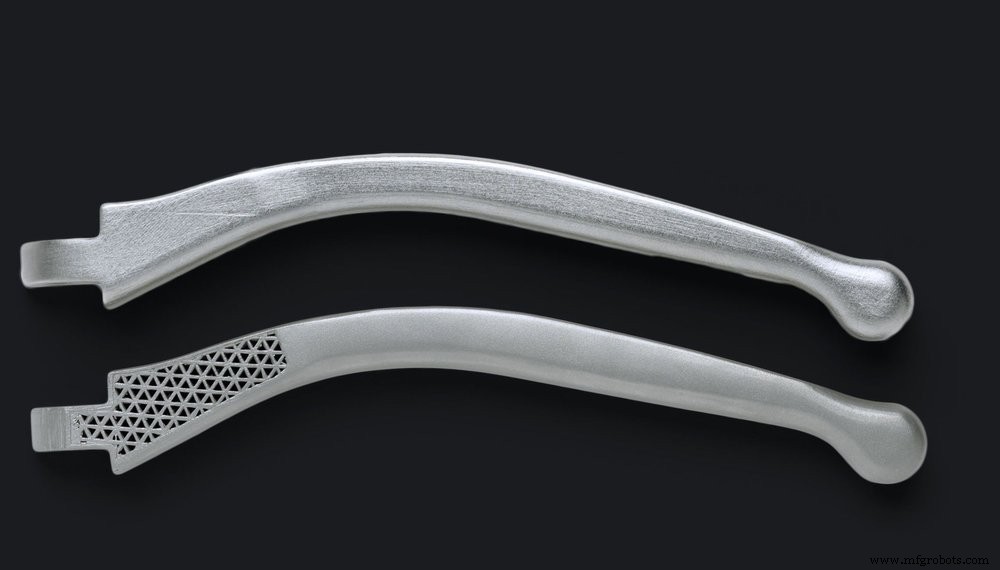
通过挤压金属细丝以增材制造零件是一种相对较新的方法。
在该领域工作的两家最著名的公司是 Markforged 和 Desktop Metal。两家公司于 2017 年首次推出了他们的金属 3D 打印系统(Markforged 的 Metal X 和 Desktop Metal 的 Studio System)。
基于挤压的金属 3D 打印的工作原理类似于熔融沉积建模 (FDM),其中灯丝被加热并通过喷嘴挤出,逐层创建零件。
然而,与 FDM 中使用的塑料长丝不同,金属挤出使用由包裹在塑料粘合剂中的金属粉末或颗粒制成的长丝。
一旦零件被打印出来,它就会保持“绿色状态”,并且需要进行额外的后处理步骤:脱脂以烧掉剩余的塑料并烧结以将金属颗粒融合在一起。
基于挤压的金属 3D 打印是最经济实惠的金属增材制造工艺之一。部分原因是它使用金属注射成型 (MIM) 材料,这种材料比粉末床工艺中使用的金属粉末便宜得多。
材料喷射
材料喷射是一种喷墨打印过程,其中打印头用于将液体形式的光反应材料逐层沉积到构建平台上。
材料喷射通常用作原型技术来创建高度准确的全彩塑料模型。
然而,一家公司已经认识到金属 3D 打印技术的潜力:以色列公司 XJet 开发了一种新颖的金属喷墨技术,可以实现高水平的细节和光洁度。
XJet 的 NanoParticle jetting™ (NPJ) 技术使用打印头沉积悬浮在液体配方中的金属油墨。该过程在加热室中进行。
随着金属油墨的沉积,它们被沉积在热成型托盘上,蒸发液体配方,只留下金属颗粒。颗粒有一层小的粘合剂涂层,使它们能够在所有三个轴上相互粘合。
打印完成后,零件就会被移到烤箱中进行烧结过程。该技术可用于中小型金属部件的功能原型制作和按需制造。
Metal Jet (HP)
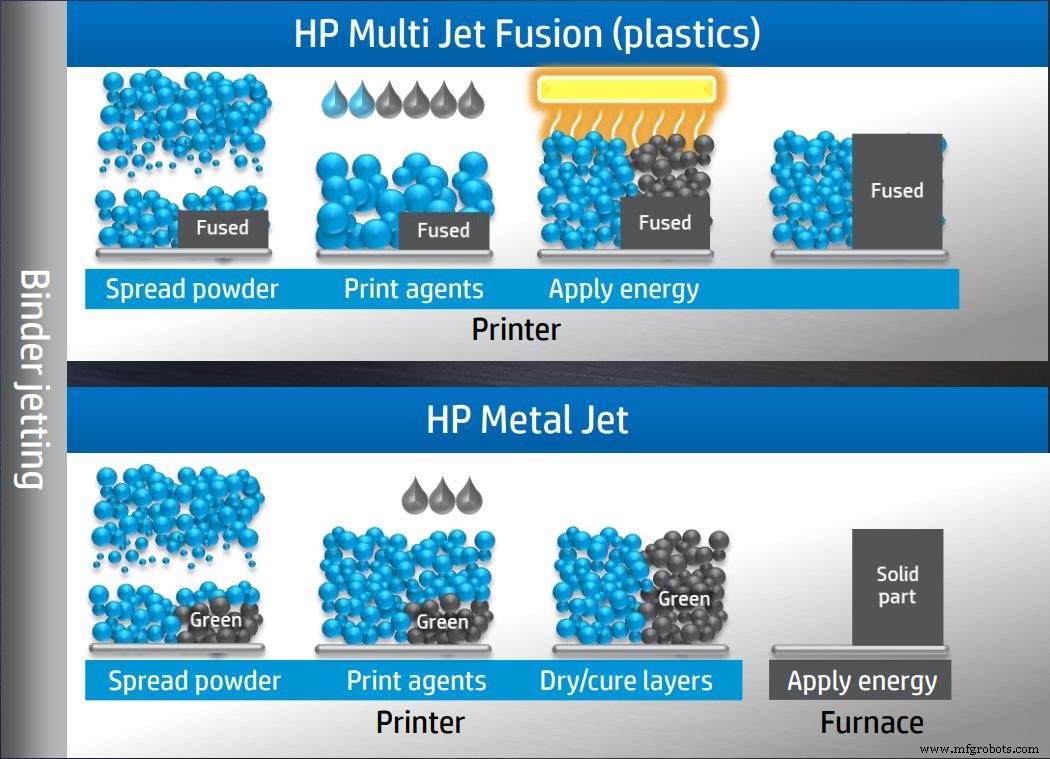
惠普于 2016 年通过推出其聚合物 Multi Jet Fusion 系统进入 3D 打印市场,首次掀起波澜。 2018 年,该公司推出了新的金属 3D 打印系统:Metal Jet,将粘合剂喷射技术更进一步。
Metal Jet 系统基于 HP 的粘合剂喷射工艺,该工艺已得到增强,可实现更快、更便宜的打印。
虽然它的工作原理与其他粘合剂喷射机类似,但该系统使用在 HP 的 Latex Ink 技术的帮助下开发的专有粘合剂。据说这种新的粘合剂配方可以更快、成本更低且更简单地烧结零件。
此外,Metal Jet 使用金属注射成型 (MIM) 粉末,能够生产符合 ASTM 标准的各向同性部件。
该技术的主要特点之一是打印头数量的增加,据说这使 Metal Jet 的生产效率比当今市场上的同类粘合剂和激光烧结机高出 50 倍。
焦耳打印(数字合金)
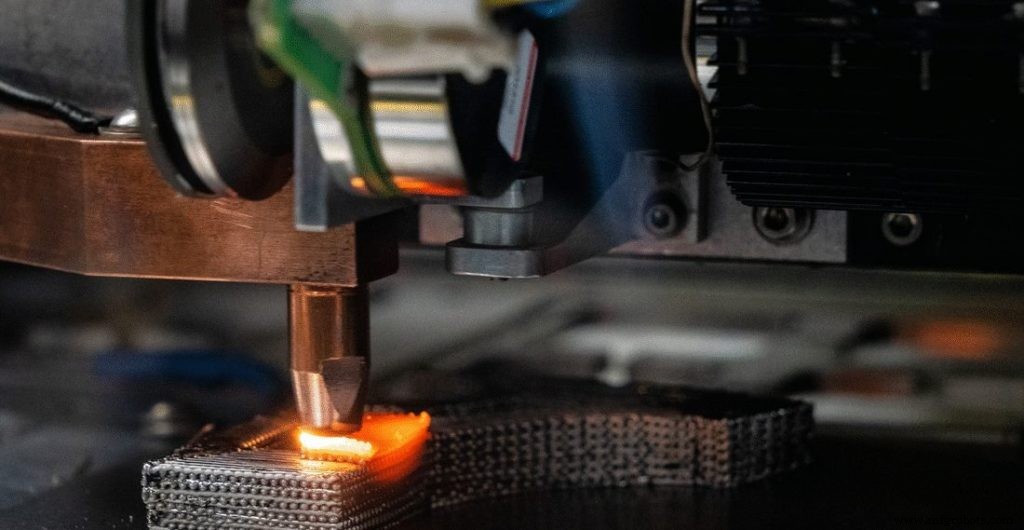
尽管它的商业发布要到 2020 年,但 Digital Alloys 的专利焦耳打印技术是另一种在这里值得一提的金属 3D 打印工艺。
焦耳印刷是一种高速技术,它使用金属线而不是粉末。
金属丝通过精密送丝送入精密运动系统。一旦导线被定位,电流就会通过导线并随后进入打印床和零件本身。当打印头移动时,金属线被电流熔化,金属液滴融合在一起形成最终部件。
据说焦耳打印技术可以生产近净形状零件,并可用于汽车、航空航天和消费品行业的工具和其他应用。
MELD(MELD 制造)
MELD Manufacturing Corporation 开发了一种新的固态金属 3D 打印工艺来制造金属零件。它是固态意味着该过程不需要在打印过程中熔化金属材料。
取而代之的是,该过程涉及将金属材料通过一个中空的旋转工具,在该工具中,极端压力和摩擦作用使正在添加的材料以及已经沉积的材料变形。
该工艺确保生产的零件具有高强度和机械性能,例如耐腐蚀性。
使用 MELD 技术打印的零件完全致密,不需要后续热处理。此外,该技术不仅适用于制造零件,还适用于涂层和修复现有组件。
制作金属 3D 打印的商业案例
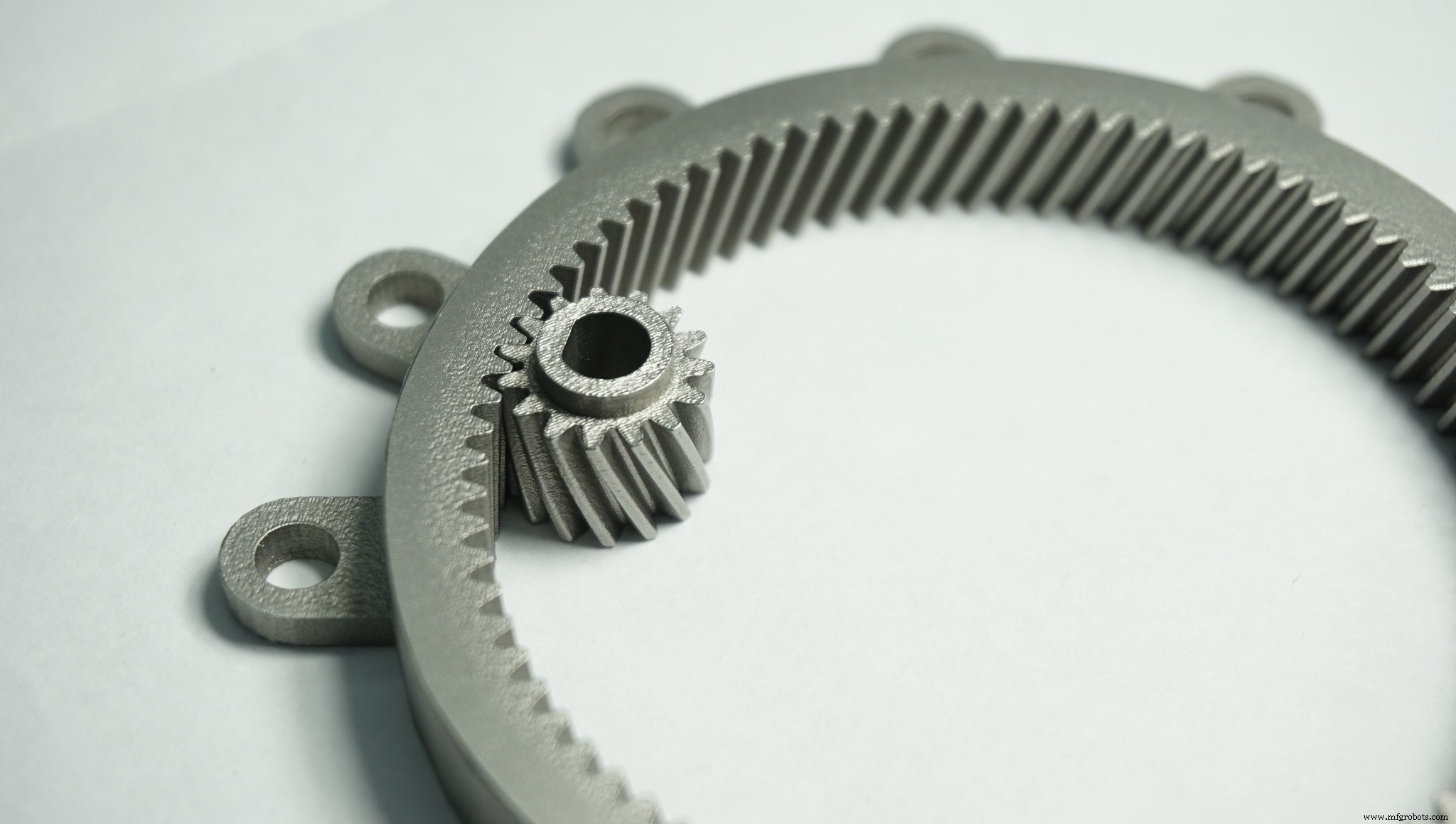
金属 3D 打印可提供传统制造工艺无法实现的复杂性和定制化水平,从而有可能改变零件的制造方式。
在决定是否投资金属 3D 打印时,重要的是要评估您的公司是否可以从该技术中受益。下面,我们概述了金属 3D 打印的一些主要优势。
节省时间,降低成本
首先,3D 打印不需要昂贵的工具和模具,使制造商能够消除昂贵且耗时的设置成本。其次,从设计到生产的能力可以将交货时间从数周或数月显着缩短到数天。
最后,通过 3D 打印整合零件组件的能力有助于显着节省人工时间和成本。
浪费更少的材料
传统的减材制造方法涉及大量的材料浪费,一项研究表明,使用数控铣床从金属块上切割材料会导致材料浪费高达 95%。
相比之下,金属 3D 打印过程产生的废物要少得多,因为材料仅在必要时进行烧结或熔化。在某些情况下,未烧结的金属粉末甚至可以重复使用。
因此,3D 打印的材料使用效率很高,材料报废率通常低于 5%。
实现更大的设计创新
金属 3D 打印可用于生产复杂的几何形状,从而突破制造可能的界限。与传统工艺相比,这些复杂设计的生产成本效益更高。
结合拓扑优化和衍生式设计等设计工具,3D 打印可用于创建具有增强功能和机械性能的轻质金属零件。
因此,这些软件设计工具可以帮助开启无数新的、创新的设计可能性。例如,可以将晶格结构纳入设计以减轻金属部件的重量,从而提高车辆或飞机的性能。
具有成本效益的小批量生产
通过 3D 打印,小批量生产在经济上变得可行。
由于模具成本高,传统的制造方法在小批量生产零件时实施起来可能非常昂贵。
相比之下,3D 打印不需要工具,因此是小批量生产的更具成本效益的选择。一个关键的例子是定制零件,其中产品可能需要一次性生产或作为小批量的一部分生产。
3D 打印还可用于按需创建零件。例如,公司可以根据需要在内部 3D 打印工具和备件——这既减少了在实物库存中储存零件的需要,又简化了物流和整个供应链。
金属 3D 打印的挑战
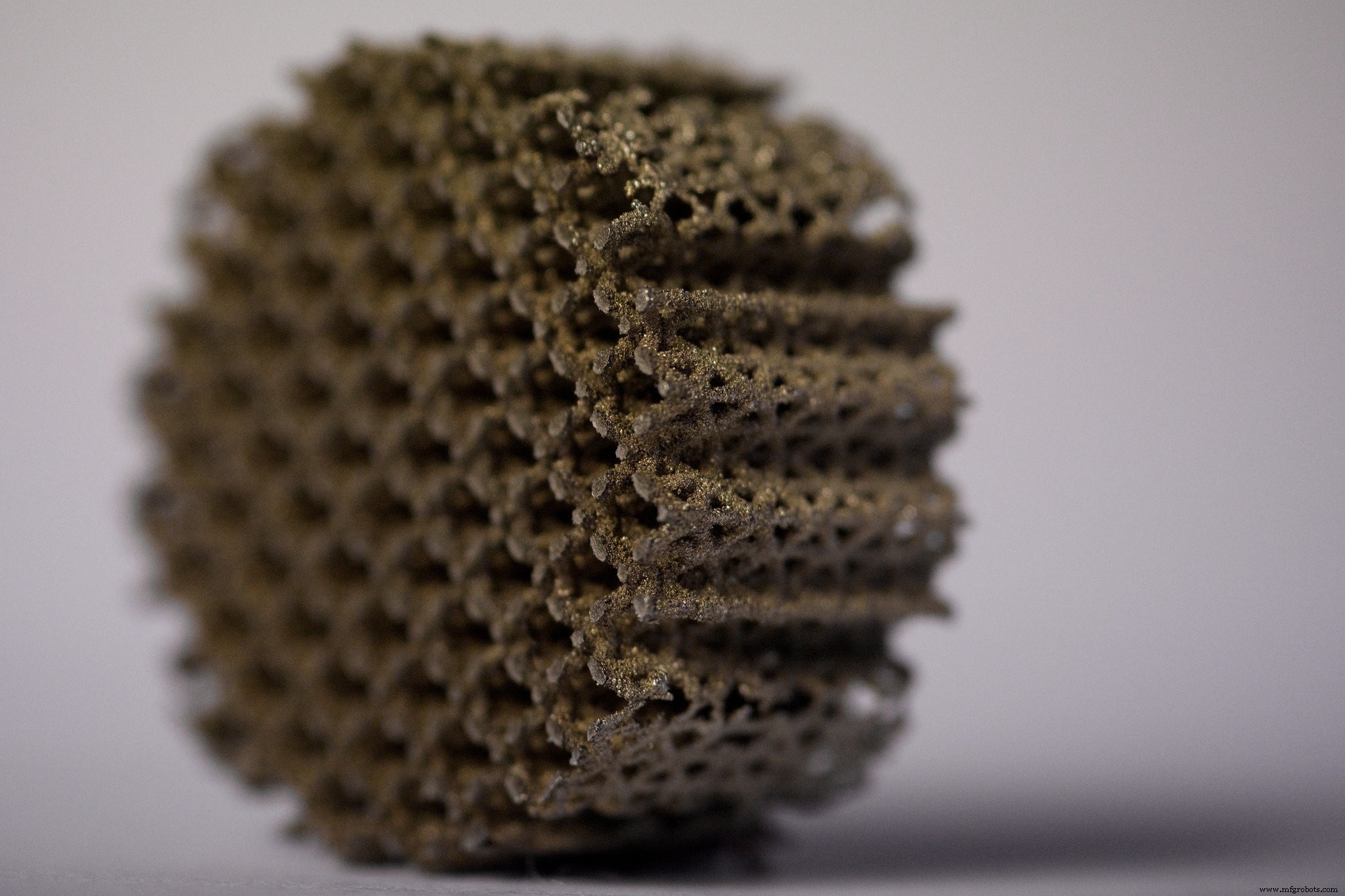
虽然金属 3D 打印的好处显而易见,但成功实施该技术仍存在挑战。下面,我们将介绍金属 3D 打印市场目前面临的一些主要挑战。
成本高
尽管 3D 打印机的价格在过去十年中大幅下降,但金属 AM 系统的成本仍然是希望投资该技术的公司面临的主要挑战之一。
目前,一台金属 3D 打印机的成本很容易达到数十万美元甚至超过 100 万美元。
同时,目前市场上可用的金属材料普遍相当有限,成本明显高于传统金属制造中使用的金属。
也就是说,在接下来的几年里,我们预计金属材料科学的进步将扩大 3D 可打印金属的选择范围并降低成本。
更复杂的
金属 3D 打印涉及的多个变量使其成为比聚合物 3D 打印复杂得多的过程。目前,许多公司缺乏在内部成功运营金属 3D 打印机所需的专业知识。
开始使用该技术的一种可能方法是与金属 3D 打印服务提供商合作。服务机构可以提供他们在选择正确的金属 AM 技术和材料方面的专业知识。
对于希望将增材制造技术引入内部的公司来说,制定和实施增材制造战略将是这一旅程的关键第一步。
确保零件质量
零件质量和工艺可重复性是制造商关注的关键问题。在金属 3D 打印方面,有很多变量会影响零件的质量。这些变量涵盖整个 AM 工作流程,从设计到构建准备和后处理。
然而,控制这些变量以实现可重复的高质量金属零件仍然是一个挑战。
材料
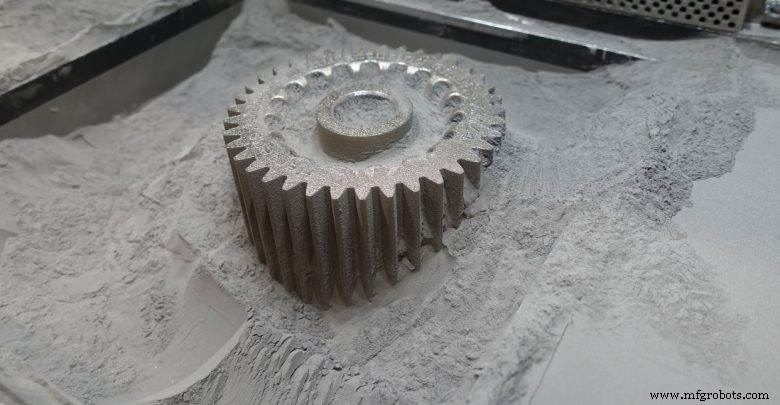
自 2012 年以来,金属一直是 3D 打印材料市场中增长最快的部分。
金属 3D 打印工艺使用优质金属材料。它们通常以粉末形式生产,并且必须满足某些特性,例如颗粒形状和尺寸以及粉末密度。
与传统的制造工艺相比,可用的 3D 可打印金属的范围仍然有限。
这是因为适用于或生产用于金属 3D 打印技术的特殊材料可能需要数年时间才能开发。
但是,像 DED 这样的一些工艺可以使用最初为传统工艺开发的金属,例如,以金属丝形式。
目前,金属3D打印最常用的材料包括铝、钛和不锈钢等轻金属。
然而,难熔金属和钴铬合金的使用也在不断扩大,这主要是由于航空航天和石油天然气行业的应用。
在下表中,我们确定了更常见的金属 3D 打印材料及其典型应用。
(AlSi10Mg、AlSi12、AlSi12Mg 合金、Scalmalloy)
主要应用:铝可用于生产轻型、几何形状复杂的零件,特别适用于汽车和航空航天工业。 钛
商业纯(1级和2级)
钛合金Ti6Al4V(5级)
钛合金Ti 6AL-4V ELI(23级)
主要应用:钛非常适合赛车、航空和医疗/牙科应用。 不锈钢
(17-4PH 和 316L 合金)
主要应用: 不锈钢在航空航天、石油和天然气、食品加工和医疗行业中尤为突出。 钴铬合金(CoCrMo)
主要应用:医疗(外科植入物作为人工关节包括膝关节和髋关节)和牙科。这种金属还被用于生产燃气和风力涡轮机的零件,以及发动机部件。 镍合金(Inconel 625、Inconel 713、Inconel 718、Inconel 738、Hastelloy X)
主要应用:镍合金是航空航天、化学加工和电力工业以及喷气发动机燃气轮机叶片中高温应用的理想选择。 铜基合金
主要应用:热管理应用(例如微型热交换器)、电气工程、工具嵌件 马氏体时效钢(工具钢)
主要应用:工具(压铸和注塑工具的型芯和嵌件)、功能原型难熔金属(钽、铌和钨)
关键应用:这组金属对于高应力应用很有价值,例如导弹和火箭推进器喷嘴、阀门和歧管;植入物(钽)贵金属(金、银、铂)
关键应用:贵金属用于小众应用,例如配饰(珠宝和手表)、牙科(皇冠、镶嵌和镶嵌)
机器
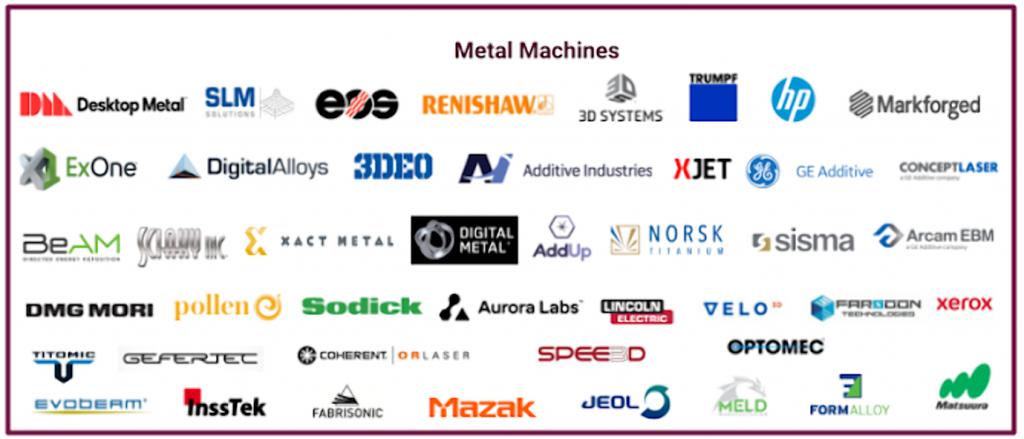
随着金属 3D 打印的兴起,市场上可用的金属 3D 打印机的数量正在增加。
根据2018年Wohlers报告,2017年金属AM系统销售额增长80%,进入市场的金属AM系统制造商数量增加。
在可供下载的表格中,我们总结了使用粉末床技术、DED、粘合剂喷射和基于挤压的金属 3D 打印的金属 3D 打印机的主要制造商。虽然不是详尽的列表,但它提供了市场上主要机器制造商的高级概览。
LaserForm CoCr (B) 或 (C) DMLS &SLM3D SystemsProX DMP 200140 x 140 x 100 mmLaserForm Ni625 (B)
5 LaserForm 17-4PH (B)
LaserForm 马氏体时效钢 (B)
LaserForm 316L (B)
LaserForm CoCr (B) 或 (C)
LaserForm AlSi12 (B) DMLS &SLM3D SystemsProX DMP 300250 x 250 x 300 mmLaserForm 17-4PH (B),
LaserForm Maraging Steel (B),
LaserForm CoCr (B)
LaserForm AlSi12 (B)
(钴铬合金、不锈钢、马氏体时效钢、铝合金 (AlSi12)) DMLS 和 SLM3D SystemsProX DMP 320275 x 275 x 380 mmLaserForm 马氏体时效钢 (A)
LaserForm 17-4PH (A)
LaserForm Ni625 ( A)
LaserForm AlSi10Mg (A)
LaserForm CoCrF75 (A)
LaserForm Ti Gr5 (A)
LaserForm Ti Gr23 (A)
LaserForm Ti Gr1 (A)
LaserForm 316L (A)
LaserForm Ni718 (A)
(钛合金、铝、镍合金、不锈钢、钴铬合金、马氏体时效钢) DMLS &SLM3D SystemsDMP Factory 500 解决方案500 x 500 x 500mm DMLS &SLMEOS M 100100 mm x 95 mm钴铬
不锈钢316L
钛Ti64 DMLS &SLMEOS EOS M 290250 x 250 x 325 mmA钴铬
马氏体时效钢
镍合金
不锈钢合金
钛和钛合金 DMLS &SLMEOS M 400400 x 400 x 400 mm 铝、马氏体时效钢、镍合金、钛合金 DMLS &SLMEOS M 400-4400 mm x 400 毫米 x 400 毫米铝、镍合金、马氏体时效钢、不锈钢、钛 Ti64、钛 2 级 DMLS 和 SLMEOSINT M 280250 毫米 x 250 毫米 x 325 毫米EOS MaragingSteel MS1
EOS CobaltChrome MP1
EOS 不锈钢
EOS 不锈钢 PH1
EOS 不锈钢 316L
EOS Titanium Ti64
EOS Titanium Ti64ELI
EOS 铝 AlSi10Mg
EOS NickelAlloy IN718
EOS NickelAlloy IN625
EOS NickelAlloy HX DMLS &SLMEOSPRECIOUS M 08080 x 80 x 95 mm金、银、铂和钯合金 DMLS &SLMRenishawRenAM250250 mm x 250 m m x 300 mmTi6Al4V ELI
AlSi10Mg
不锈钢316L
工具钢
镍合金
钴铬合金。 DMLS &SLMRenishawRenAM400250 mm × 250 mm × 300 mmTi6Al4V ELI
AlSi10Mg
不锈钢316L
工具钢
镍合金
钴铬合金。 DMLS &SLMRenishawRenAM 500M250 mm × 250 mm × 350 mmTi6Al4V ELI
AlSi10Mg
不锈钢316L
工具钢
镍合金
钴铬合金。 DMLS &SLMRenishawRenAM 500Q250 mm x 250 mm x 350 mmTi6Al4V ELI
AlSi10Mg
不锈钢316L
工具钢
镍合金
钴铬合金。 DMLS &SLMSLM 解决方案SLM 125125 x 125 x 75不锈钢
工具钢
钴铬合金
铬镍铁合金
铝
钛 DMLS &SLMSLM 解决方案SLM 280 2.0280 x 250Stainless Steel br />工具钢,
钴铬合金
超级合金
铝
钛 DMLS 和 SLMSLM 解决方案SLM 500500 x 280 x 325铝合金
不锈钢
工具钢
钛
铬镍铁合金
钴铬DMLS和SLMConcept激光(GE添加剂)Mlab cusing50 x 50 x 80 mm不锈钢
青铜
金
银合金
钴铬合金DMLS &SLMConcept Laser (GE Additive)Mlab cusing R50 x 50 x 80 mm不锈钢
青铜
金
银合金
钴铬合金
钛和钛合金 DMLS &SLMConcept Laser (GE Additive)Mlab cusing 200R100 x 100 x 100 mm不锈钢
铝
钛合金
商业纯钛2级
马氏体时效钢
青铜
不锈钢,
镍基合金
钴铬合金DMLS &SLMConcept Laser (GE Additive)M1 cusing250 x 250 x 250 mm不锈钢
马氏体时效工具钢,
不锈钢工具钢
镍基合金
钴铬合金 DMLS 和 SLMConcept 激光(GE 添加剂)M2 cusing250 x 250 x 350 mm 不锈钢
铝合金
钛合金
纯钛 2 级
马氏体时效钢
抗腐蚀沉淀硬化钢
沉淀硬化不锈钢
镍基合金
钴铬合金 DMLS &SLMConcept Laser (GE Additive)M2 cusing Multilaser250 x 250 x 350 mm不锈钢
铝合金
钛合金
纯钛
马氏体时效钢
沉淀硬化钢
镍基合金
钴铬合金 DMLS &SLMConcept Laser (GE) Additive)M LINE FACTORY500 x 500 x 高达 400 mm 铝合金
钛合金
镍基合金
钴铬合金 DMLS &SLMConcept Laser(GE Additive )X LINE 2000R800 x 400 x 500 mm 铝 (AlSi10Mg)
钛合金 (TiAl6V4)
镍基合金 EBMArcam(GE 添加剂)Arcam EBM A2X200x200x380 mmTiAl,
合金 camGE 合金 EBMArcam (GE Additive) )Arcam EBM Q10plus200 x 200 x 180mmTitanium Ti6Al4V
Cobalt-Chrome EBMArcam (GE Additive)Arcam EBM Q20plus350 x 380mmTitanium Ti6Al4V
Cobalt-Chrome EBMarcam (GE Additive)Spectra250BMTiArcam EBMArcam (GE Additive) )
合金 718. DMLS &SLMSismamysint100100 mm x h100 mm钴铬
贵金属
青铜
钢合金
镍合金
纯铜
铜合金
钛
铝合金 DMLS 和 SLMSismamysint300300 x 400 毫米贵金属
青铜
钴铬
不锈钢
马氏体时效钢
镍合金
铝合金
钛 DMLS 和 SLMDMG MoriLASERTEC 30 SLM 第二代 300 x 300 x 300mm 铝
钛
工具钢
钴铬合金
Inconel DMLS 和 SLMXact Metal12M200Cx 127 x 127 毫米不锈钢、
超级合金、
钴铬合金、
哈氏合金® X、
工具钢 DMLS 和 SLMXact MetalXM200S127 x 127 x 127 毫米铝 Si10Mg,
青铜、
不锈钢、
超级合金、
钴铬合金、
哈氏合金® X、
钛 Ti64、
模具钢 DMLS 和 SLMXact MetalXM300C254 x 330 x 330 毫米不锈钢、
超级合金、
钴铬合金、
哈氏合金® X、
工具钢、
青铜 DMLS 和 SLMAddUpFormUp™ 350350 x 350 x 350 毫米不锈钢,
马氏体时效钢,
镍合金,
钛合金,
铝合金 DMLS 和 SLMTRUMPFTruPrint 1000100 mm x 100 mm 高度不锈钢,
工具钢,
铝,
镍基,
钴铬合金,
铜,
钛,
贵金属合金 DMLS 和 SLMTRUMPFTruPrint 3000300 毫米 x 400 毫米高度不锈钢,
/>工具钢,
铝,
镍基,
钴铬合金,
铜,
钛,
Pre贵金属合金
青铜 DMLS 和 SLMTRUMPFTruPrint 5000300 mm x 400 mm 高度不锈钢、
工具钢、
铝、
镍基、
钴铬合金、
/>铜、
钛、
贵金属合金 DMLS 和 SLMVELO3DSapphire315 毫米直径 x 400 毫米因科镍合金 718、钛 (6Al4V) DEDSciakyEBAM® 68711 x 635 x 1600 毫米钛合金
钛合金
钛合金718、625、
钽、
钨、
铌、
不锈钢(300 系列)、
铝、
钢、锆合金、
铜镍,
镍铜 DEDSciakyEBAM® 881219 x 89 x 1600 mm钛
钛合金
因科镍合金 718、625、
钽、
钨、
铌、
Stainless Steels (300 series),
Aluminum,
Steel Zircalloy,
Copper Nickel,
Nickel Copper DEDSciakyEBAM® 1101778 x 1194 x 1600 mmTitanium
Titanium alloys
Inconel 718, 625,
Tantalum,
Tungsten,
Niobium,
Stainless Steels (300 series),
Al uminum,
Steel Zircalloy,
Copper Nickel,
Nickel Copper DEDSciakyEBAM®1502794 x 1575 x 1575 mmTitanium, Titanium alloys, Inconel 718, 625, Tantalum, Tungsten, Niobium, Stainless Steels (300 series),
Aluminum, Steel Zircalloy, Copper Nickel, Nickel Copper DEDSciakyEBAM® 3005791 x 1219 mm x 1219 mmTitanium, Titanium alloys, Inconel 718, 625, Tantalum, Tungsten, Niobium, Stainless Steels (300 series),
Aluminum, Steel Zircalloy, Copper Nickel, Nickel Copper DEDOptomecLENS 450100 x 100 x 100 mmTitanium, Nickel, Tool Steel, Stainless Steel, Refractories, Composites, Cobalt, Aluminium, Copper DEDOptomecLENS MR-7300 x 300 x 300 mmTitanium, Nickel, Tool Steel, Stainless Steel, Refractories, Composites, Cobalt, Aluminium, Copper DEDOptomecLENS 850-R900 x 1500 x 900 mmTitanium, Nickel, Tool Steel, Stainless Steel, Refractories, Composites, Cobalt, Aluminium, Copper DEDOptomecLENS 860 Hybrid860 x 600 x 610 mmTitanium, Stainless Steel, Tool Steel, Inconel DEDOptomecLENS C S 600600 x 400 x 400 mmInconel Alloys, Stainless Steels, Titanium Alloys DEDOptomecLENS CS 800800 x 600 x 600 mmInconel Alloys, Stainless Steels, Titanium Alloys DEDBeAMModulo 250400 x 250 x 300Titanium Alloys, Steels, Nickel Alloys, Cobalt Alloys, and more DEDBeAMModulo 400650 x 400 x 400Titanium Alloys, Steels, Nickel Alloys, Cobalt Alloys, and more DEDBeAMMagic 8001200 x 800 x 800Titanium Alloys, Steels, Nickel Alloys, Cobalt Alloys, and more DEDInnsTekMX-600450 x 600 x 350 mmInconel, Steel DEDInnsTekMX-10001,000 x 800 x 650 mmInconel, Steel DEDInnsTekMX-Grande4,000 X 1,000 X 1,000 mmInconel, Steel DEDDMG MoriLASERTEC 65 3D735 x 650 x 560 mm Metal Binder JettingExOneM-Flex400 x 250 x 250 mmStainless steel, bronze, tungsten Metal Binder JettingExOneM-Print800 x 500 x 400 mmStainless steel (420 and 316) Metal Binder JettingExOneInnovent+160 x 65 x 65 mmStainless steel Metal Binder JettingExOneX1 25 PRO400 x 250 x 250 mmSteel (136L, 304 L and 17-4PH), Stainless steels, Inconel 718 and 625, M2 and H11 tool steels, Cobalt chrome, Copper, Tungsten carbide cobalt Metal Binder JettingDigital MetalDM P2500203 x 180 x 69 mmStainless steel (316L, 17-4PH), Titanium Ti6Al4V Metal Binder JettingHPMetal Jet430 x 320 x 200 mmStainless steel powders (developed for metal injection molding) Metal Binder JettingDesktop MetalProduction System337 x 337 x 330 mmAluminium, titanium, high-performance alloys Material ExtrusionDesktop MetalStudio System300 x 200 x 200 mmAlloy steel, Aluminium Carbide, Copper, Heavy alloy, High performance steel, Magnetics, Stainless steel, Super alloy, Titanium, Tool steel Material ExtrusionMarkforgedMetal X300 x 220 x 180 mmStainless Steel, Aluminum, Tool Steel, Inconel, Titanium
Industrial Applications
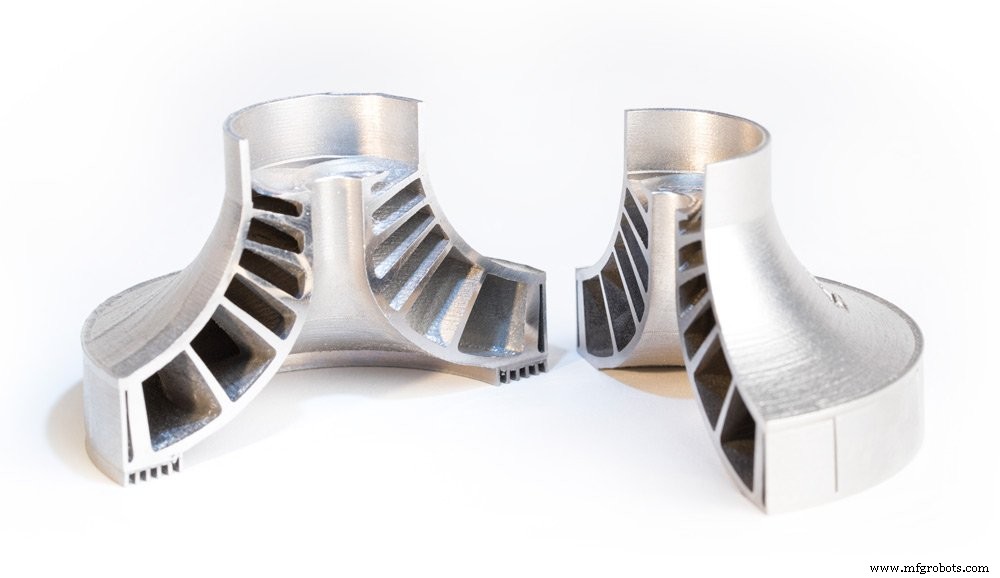
Metal 3D printing has found its niche in a number of industries, with players in the aerospace, automotive and medical industries at the forefront of driving innovation with the technology.
In this section, we take a look at the most common applications for the technology, as well as key use cases that have unlocked the benefits of metal 3D printing.
Industry Common applications Aerospace Fuel injectors, blades, combustor liners, rocket engine manifolds, brackets, functional prototypes Automotive Air ducts, brackets, uprights, knuckles, turbochargers, suspension assemblies, transmission plates, brake calipers, manifolds Medical and dental Custom-fit dental restorations, such as stages, crowns, and bridges; customised orthopaedic implants (hip, knee, and spinal), surgical tools Industrial goods Tool inserts with conformal cooling channels, industrial pump components, bearings, stators, heat exchangers, impellers, tooling repair
Aerospace
The aerospace industry has been a huge pioneer of metal 3D printing. By using the technology, aerospace companies hope to produce more efficient, lightweight aircraft parts to improve aircraft performance.
Within the aerospace industry, metal 3D printing is used in a range of applications, from functional prototypes to tooling, replacement parts and structural aircraft components.
General Electric
A great example is General Electric (GE), which is extensively using metal 3D printing to make and develop new products. GE’s subsidiary, GE Aviation, is producing fuel nozzles for the LEAP family of jet engines, with an aim to manufacture 100,000 fuel nozzles by 2020.
Having achieved the milestone of 30,000 3D-printed fuel nozzles in October 2018, GE looks like it’s well on its way to fulfilling this goal.
Using advanced design tools and Electron Beam Melting technology, GE’s engineers were able to create a fuel nozzle 25% lighter and 15% more fuel efficient than its traditionally produced counterpart.
The breakthrough in this case is that the fuel nozzle was printed as a single unit, whereas previous models incorporated 20 separate parts which needed to be subsequently assembled.
But GE has not stopped here. The company is also building its GE Catalyst, an advanced turboprop engine that has more than a third of its components 3D printed in various metals.
Similar to its fuel nozzles, the engineers behind the turboprop have achieved considerable part consolidation, reducing the number of parts produced from 855 to just 12. A redesign will also help to reduce the fuel burn of an engine by as much as 20%.
Automotive
Automakers have been using 3D printing since the technology’s early days — Ford Motor Company, for example, notably bought the third 3D printer ever made.
For many years, metal 3D printing has proved to be a cost-effective tool for prototyping and producing jigs and fixtures. However, advancements with the technology mean that more opportunities are opening up for end-part production.
Automotive companies can use metal 3D printing to create lightweight metal parts, leading to enhanced vehicle performance and lower fuel consumption. This is particularly beneficial for the motorsports industry, where 3D-printed car parts can offer racing teams significant performance advantages.
Another area of interest for the industry is also using 3D printing to produce spare parts that are typically produced in low volumes. 3D printing spare parts on demand enables automakers to receive parts at the point of need, reducing inventory costs and increasing agility.
BMW
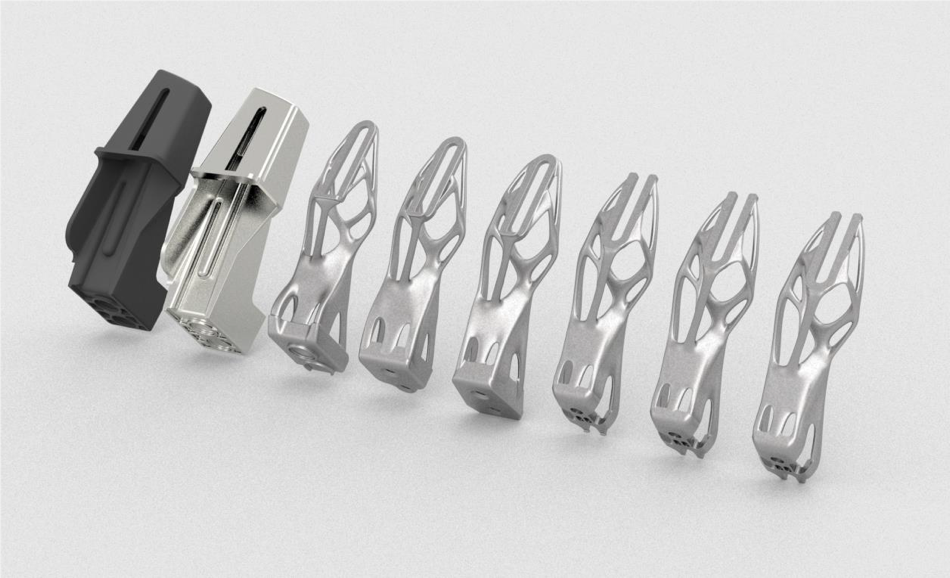
BMW is another company using 3D printing extensively. Most notably, the company has recently moved into the series production of a 3D-printed metal component for its 2018 BMW i8 Roadster vehicle.
Using topology optimisation, designers were able to optimise the vehicle’s roof bracket — a fixture for the folding/unfolding mechanism of the vehicle’s soft top. 3D printed in aluminium alloy powder (AlSi10Mg), the new roof bracket is 44% lighter than its conventionally made counterpart.
Furthermore, engineers optimised the design of the bracket to eliminate support structures. By doing so, the team was able to increase throughput from 51 to 238 of these parts per platform. This makes BMW’s roof bracket the first automotive component to be mass-produced with the help of metal 3D printing.
Bugatti
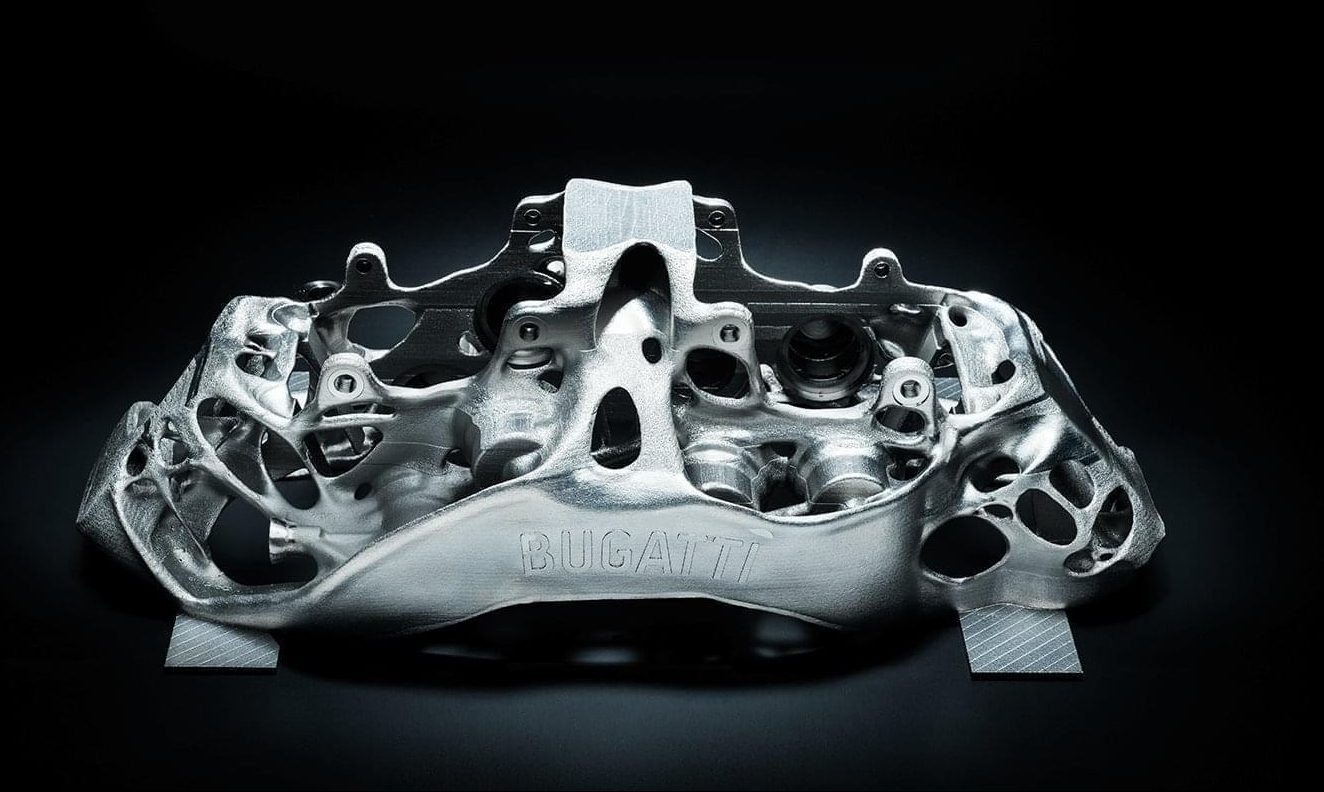
An exciting application of metal 3D printing comes from luxury car manufacturer, Bugatti. The French automaker has developed a 3D-printed brake caliper to be used on its Bugatti Chiron supercar.
An essential part of the braking system, the brake caliper has been made lighter and stronger thanks to 3D printing. Measuring 41 x 21 x 13.6 cm, the part took 45 hours to print using SLM technology and titanium powders.
By using 3D printing, Bugatti also achieved a 40% weight reduction for the caliper, when compared to machined aluminium alternative.
In 2018, the company successfully tested the brake caliper, proving that it can meet extreme strength, stiffness and temperature requirements.
Audi
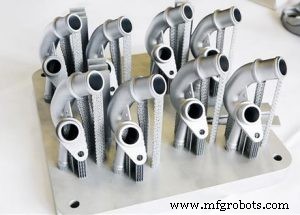
Audi presents a different business case for metal 3D printing. In this case, the German automaker is using the technology to produce spare parts that are in low demand.
Metal 3D printing allows Audi to produce these parts on demand, producing and supplying spare parts as they are needed. This in turn greatly simplifies logistics and warehousing.
Audi identified that smaller, complex components would be most suited for metal 3D printing. A good example of a component is water adapters, which Audi is already producing for the Audi W12 engine. The company says that the load capacity of the components is comparable to that of parts manufactured using traditional methods.
Medical
In the medical field, metal 3D printing allows highly customised medical devices, like orthopedic implants, to be created.
It’s far from unusual for off-the-shelf orthopaedic implants to be used for replacement surgeries. However, prefabricated implants can sometimes cause problems after the surgery as they don’t always fit properly.
To avoid this, 3D printing is increasingly being used to create customised, patient-specific implants with improved functionality.
For example, implants can be designed with improved porosity and surface texture, facilitating the growth of the tissue around the implant. This level of complexity can only be achieved with 3D printing. SmarTech Publishing predicts that more than 2 million implants will be 3D printed in metal by 2025.
Additionally, metal 3D printing can be used to create hip and knee joint replacements, cranial reconstruction implants and spinal implants.
Lima Corporate
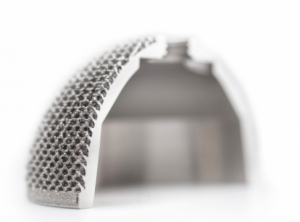
Italian medical device manufacturer Lima Corporate has been bringing additively manufactured hip implants to market for 10 years, using Electron Beam Melting (EBM) technology.
The company developed a technology for 3D printing biocompatible titanium in cellular solid structures that resemble natural bone. Such structures are used to coat an implant, allowing it to be better integrated with human tissue.
The technology is said to have helped almost 100,000 patients, enabling better implant performance and outcomes.
Industrial Goods
When it comes to the design and manufacture of tooling equipment, 3D printing can empower engineers to overcome traditional limitations. This can mean being able to create a mould or core in a matter of days instead of months, significantly reducing lead times.
Within the injection moulding industry, moulds are typically CNC-machined. Here, production costs can range from from $20,000 to hundreds of thousands of dollars. Lead times can last between 2 to 4 months. Additionally, moulds can often require multiple design iterations to achieve the final design, a costly and time-intensive process.
However, metal 3D printing can overcome these inefficiencies in several ways. First, the technology enables rapid design iterations, enabling changes to be made with relative ease.
Second, the performance of tooling aids and components can be enhanced with additive manufacturing.
For example, conformal cooling channels, lattice structures, and complex core/cavity shapes, which are too expensive or impossible to manufacture traditionally, can be factored into a mould design and 3D printed.
Conformal cooling channels are particularly beneficial as they help to achieve more homogenous heat transfer within the mould, compared to traditionally drilled straight-line cooling channels, resulting in greater cooling characteristics.
GW Plastics 3D prints moulds with conformal cooling
GW Plastics, US-based mould maker, has invested in hybrid metal 3D printing with the goal of building injection moulds with conformal cooling. One of the key reasons for this investment is faster cycles and better part quality enabled by 3D-printed moulds.
In fact, the company says 3D-printed moulds can save up to 30% of the cycle time by reducing cooling time. Furthermore, metal 3D printing allows GW Plastics to print a mould as a single piece, thus eliminating the need to assemble multiple components.
Post-processing
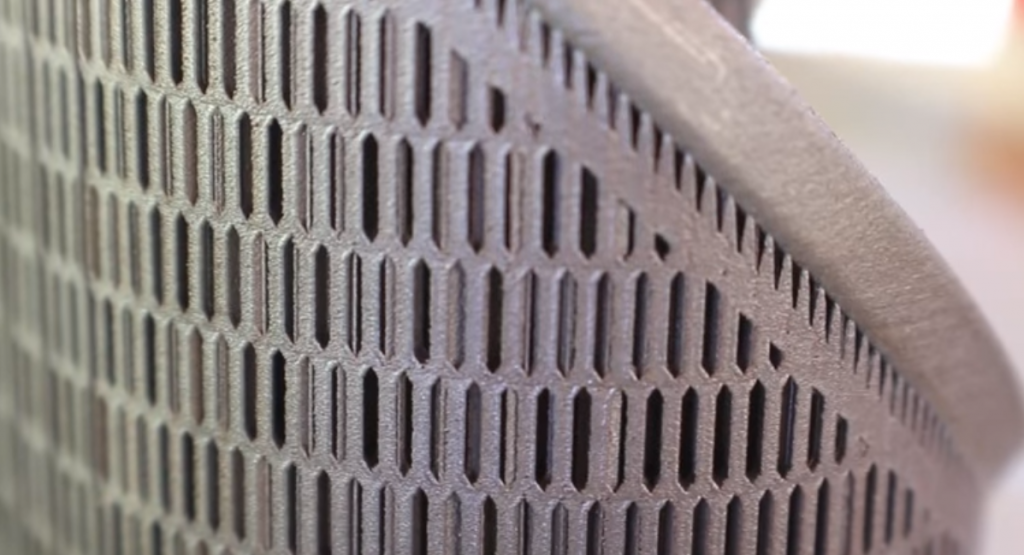
Post-processing is an unavoidable step when 3D printing metal parts. Post-processing helps to improve the mechanical properties, geometrical accuracy and aesthetics of a part, ensuring that a part meets the required design specifications.
Before printing your part, it’s important to understand the various post-processing methods that can be used to finish a metal part.
In this section, we’ll be looking at some of the main post-processing steps that can help to achieve the necessary finish for metal 3D-printed parts.
Stress relief
High temperatures and subsequent cooling are a common occurrence during the metal 3D printing process. However, when a metal part is subjected to such extreme temperature changes, this can lead to residual stress.
To avoid deformations that can occur as a result of a build-up of residual stress, parts produced with powder bed processes must undergo a stress relieving cycle. The number of stress relief cycles depends on the metal or alloy used to produce a part.
In order to protect the surface of a part from oxidation, the stress relieving heat treatment takes place in an inert (typically argon) atmosphere. Parts are typically heat treated while still attached to the build platform.
During the stress relieving cycle, the whole platform is placed in a furnace, where the part is heated to a temperature range between 550-675°C for 1 to 2 hours and then cooled down slowly. Stress corrosion cracking can also be reduced through this stress relief process.
Hot Isostatic Pressing (HIP)
Secondary heat treatment like Hot Isostatic Pressing (HIP) helps to improve the microstructure and mechanical properties of a metal part.
With HIP, high temperatures (up to 2200ºC) and isostatic inert gas pressure (from 100 to 3100 bar) are applied to a part to achieve the highest possible density, reduce porosity and eliminate internal voids.
The HIP treatment of metal parts results in optimum mechanical properties that can be compared with wrought and cast alloys.
Important to note is that the natural cooling in an HIP system can take between 8 and 12 hours. However, HIP systems powered by uniform rapid cooling technologies have been developed, allowing for the parts to be cooled from 1,260 to 300°C in less than 30 minutes.
Powder removal
With powder bed processes, a printed part is encapsulated in the unused powder which needs to be removed once the printing process is complete. The excess powder can be removed manually or automatically with the help of specialised equipment, and then recycled for later use.
The removal of any unmelted powder trapped inside a part should also be taken into consideration. For this reason, at least two escape holes should be factored into the design to help easily remove powder after printing.
Part removal
Once a part has been printed, it will need to be removed from the build platform. Build plates are then machined separately to remove excess material and return them to a usable state.
Wire Electrical Discharge Machining (WEDM) is the process of choice for cutting metal parts away from their build plates. WEDM involves creating electrical dischargers, releasing sparks which rapidly cut away material. Although the process is comparatively slow and used only with electrically conductive metals , it leaves a clean, smooth surface.
Cutting parts away with a bandsaw is another, considerably faster method. However, the process lacks the precision of wire EDM. However, if a part is going to be CNC machined afterwards, this precision can be sacrificed in favour of a faster post-processing time.
Support removal
Support structures are often considered a necessary evil when it comes to 3D printing, and this is particularly the case with metals.
Powder bed fusion technologies, like SLM and DMLS, will always require supports to ensure that they are anchored to the base plate and to mitigate the effects caused by residual stresses.
These supports are typically made from the same material as the part itself and help to minimise defects such as warping or cracking resulting from the high processing temperatures.
Supports are typically removed with the help of CNC machining. However, it’s a good practice to design as few supports as possible. In the Designing for Metal 3D printing section, we look at some of the ways to reduce the amount of support structures.
Surface finishing
As we’ve seen, a metal part that has just been printed won’t have the necessary properties required of the finished part. To achieve a smooth finish for a metal part, there are a number of common surface finishing techniques, including machining, sand blasting, media blasting and polishing.
For example, metal polishing can be used to achieve a ‘mirror-like’ finish for your part. Typically, polishing will be required before other surface treatments are conducted, in order to prevent corrosion and improve the appearance of the part. Applications are typically in the aerospace and automotive industries, as well as medical.
Abrasive blasting methods, such as sandblasting, bead blasting and media blasting, involves an abrasive material being forcibly sprayed onto a part to achieve a smooth surface.
Designing for Metal 3D Printing
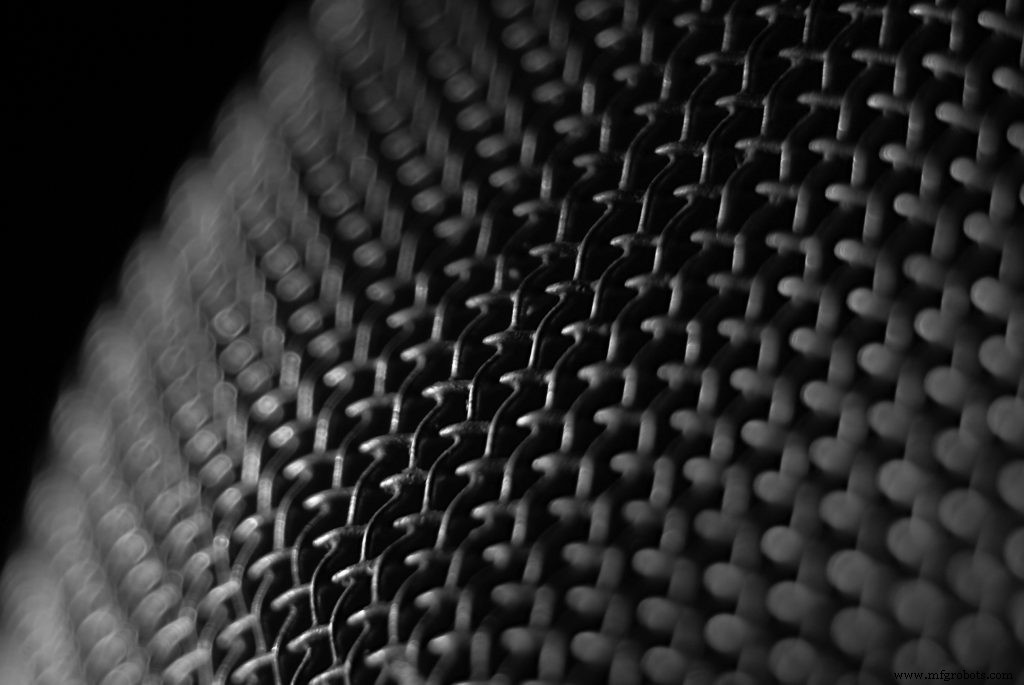
Key Considerations
Metal additive manufacturing gives us the freedom and flexibility to produce parts with complex shapes and intricate features. However, as with any technology, it does have its own set of capabilities and limitations. Understanding the basics of design for metal 3D printing is therefore crucial to obtain a successful print.
Below are some of the key considerations to keep in mind when designing for metal 3D printing.
1. Wall Thickness
Choosing the right wall thickness can make the difference between a successful and a failed print.
As a general rule of thumb, it’s recommended to design walls with a minimum wall thickness of 0.4mm.
It’s also important to ensure that the wall thickness of your parts are not too thin or thick, as this can result in deformation during the printing process or cause damage after removal from the build plate.
In the case of thick walls, the mass can be minimised by applying lattice or honeycomb structures, making the overall printing process cheaper and faster.
2. Support structures
While it’s ideal to design a part with the minimum amount of supports necessary, support structures will virtually always be required with metal 3D printing technologies (except for DED).
Supports play two main roles:first, they are used to anchor a metal part to the base plate to draw away heat, which could otherwise cause residual stresses and build failures.
Second, supports are required to successfully print complex features such as holes, angles and overhangs. For these features, angle measures should be noted:overhangs with an angle less than 45° will require supports.
For features located inside a part, such as horizontal holes along the X or Y axis, it’s generally recommended to design angled support structures.
Angled supports can help maintain a solid connection with the printing bed while minimising the amount of contact the supports have with your part’s surface area. This will make post-processing much easier.
Finally, make sure to check that all support structures will be accessible after printing. Any supports that are difficult to reach will be hard to remove cleanly.
3. Overhangs and Self-Supporting Angles
Overhangs are unsupported downward-facing surfaces, and will need to be carefully considered when designing a part.
Large overhangs (typically over 1mm) will require support structures to prevent them from collapsing during the printing process. The maximum length of an unsupported horizontal overhang is typically 0.5mm, and it is important to keep your overhangs below this length.
If your design requires overhangs, you can also design fillets and chamfers under the downfacing surfaces to make the overhang self-supporting.
Angled features can be designed self-supporting. For this, the angle of a feature should not be less than 45°.
4. Part Orientation
Part orientation is another critical consideration with metal 3D printing. Experimenting with the orientation of your part is the best way to minimise the amount of support structures needed.
For example, if you want to make a metal part with hollow tubular features, a horizontal orientation will take up more space, while a vertical or angled orientation will save space and reduce the amount of supports needed.
Part orientation is also important in determining the accuracy and surface roughness of a part. When selecting your part orientation, keep in mind that downward and upward facing surfaces will have different surface roughness (so-called down-skins tend to have inferior surface finish). If you want to produce detailed features with the best accuracy, make sure to orientate these on the upward facing surface of the part.
5. Channels and Holes
Metal additive manufacturing is notable for its ability to produce parts with internal complex channels for improved fluid flow and holes. A general rule of thumb is to not design such features under 0.4mm in powder-bed processes and under 0.2mm in Metal Binder Jetting. Holes and tubes larger than 10mm in diameter will require support structures.
Keep in mind that perfectly round horizontal holes are still a challenge to 3D print. Consider redesigning such shapes into a self-supporting teardrop or diamond shape.
Additionally, if you are designing a hollow part, you need to factor in the design escape holes to ensure the removal of the unmelted powder. A recommended diameter for escape holes is 2-5mm.
结论
Metal 3D printing:a viable manufacturing technology
Metal 3D printing is emerging as a viable manufacturing technology, as advancements across the spectrum of hardware, materials and software continue to be made.
The technology could help to drive new business models and product development strategies by enabling economic low-volume and on-demand production, innovative design possibilities and, of course, mass customisation.
Of course, it will take some time for companies to become fully confident with the technology. However, an increase in knowledge sharing and education will not only help to further the potential of metal 3D printing, but will also spur a wider adoption of the technology across industries.
Discover More Metal 3D Printing Resources:
Expert Interviews
Digital Alloys CEO Duncan McCallum on Joule Printing and the Future of Metal 3D Printing
HP’s Global Head of Metals on the Impact of HP Metal Jet
ANSYS’ Chief Technologist on Achieving Metal 3D Printing Success with Simulation
Sintavia President Doug Hedges on Achieving Serial Production with Metal 3D Printing
APWORKS CEO Joachim Zettler on Finding the Right Business Case for Metal 3D Printing
SmarTech Analysis’ Scott Dunham on the Future of Metal 3D Printing, Service Bureaus and the AM Materials Market [Part Two]
MELD Manufacturing CEO Nanci Hardwick on Fulfilling the Potential of Metal Additive Manufacturing
3DEO’s President Matt Sand on Taking Metal 3D Printing Into High-Volume Production
VELO3D’s VP of Technology Partnerships on Expanding the Capabilities of Metal 3D Printing
Metal 3D Printing Technologies
Metal 3D Printing:Where are We Today?
All You Need to Know About Metal Binder Jetting
Metal 3D Printing:What is Direct Energy Deposition?
An Introduction to Electron Beam Melting
An Introduction to Wire Arc Additive Manufacturing
Your Guide to the Top DMLS Machines [2018]
Designing for Metal 3D Printing
6 Important Design Considerations for Metal 3D Printing
Making Metal Parts Lighter with Metal 3D Printing
Metal 3D printing Materials
Why Materials are the Key to Metal 3D Printing Success:Expert Interview with voestalpine’s Armin Wiedenegger
3D Printing Precious Metals – a New Approach?
Scalmalloy:The Latest High-Performance Material for Metal 3D Printing
A Quick Guide to 3D Printing Metals
A Guide to 3D Printing With Titanium
Metal 3D Printing Challenges
5 Common Problems Faced with Metal 3D printing – and How You Can Fix Them
Quality Assurance for Metal 3D Printing:Solving 3 Common Challenges
Metal 3D Printing Applications
5 Innovative Use Cases for Metal 3D Printing
How Can 3D Printing Benefit Metal Casting? Here Are 3 Ways
3D打印


